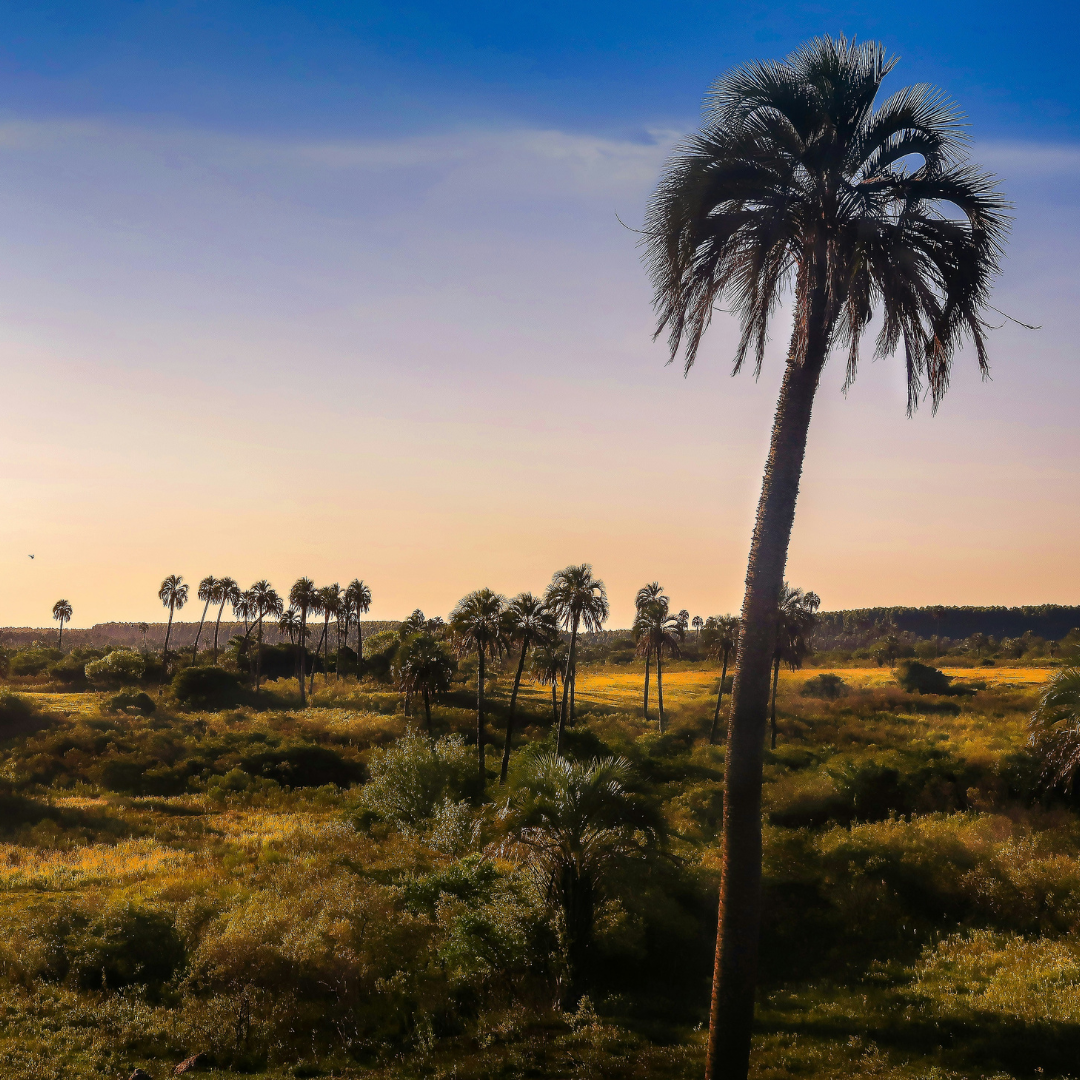Get to El Palmar National Park by car and enjoy nature very close to Buenos Aires
Discover one of Argentina’s National Parks. Walk along paths between palm trees and dive into the Uruguay River. And on the way back, make a stop at the Ciervo de los Pantanos National Park.
When we plan a getaway near Buenos Aires, we often look at the beautiful Atlantic Coast. It is true that it is one of the favorite destinations, but not the only one. At Rentennials, we suggest you take a close look at what the province of Entre Ríos has to offer. The El Palmar National Park, along with cities and towns with history, make the province an unmissable place to visit.
A different landscape is present on the coast of the Uruguay River. Palm trees, beaches and the possibility of spending a few nights in a National Park. In addition, both on the way there and on the way back, you can make a stop at another protected area: the Ciervo de los Pantanos National Park.
Getting there is very simple. The best thing is to go with a car. If you prefer to use another one or you don’t have one, you just have to rent a car with Rentennials and start a trip of a few days.
In this article we provide you with all the information so that you can start planning your next trip to Entre Ríos.
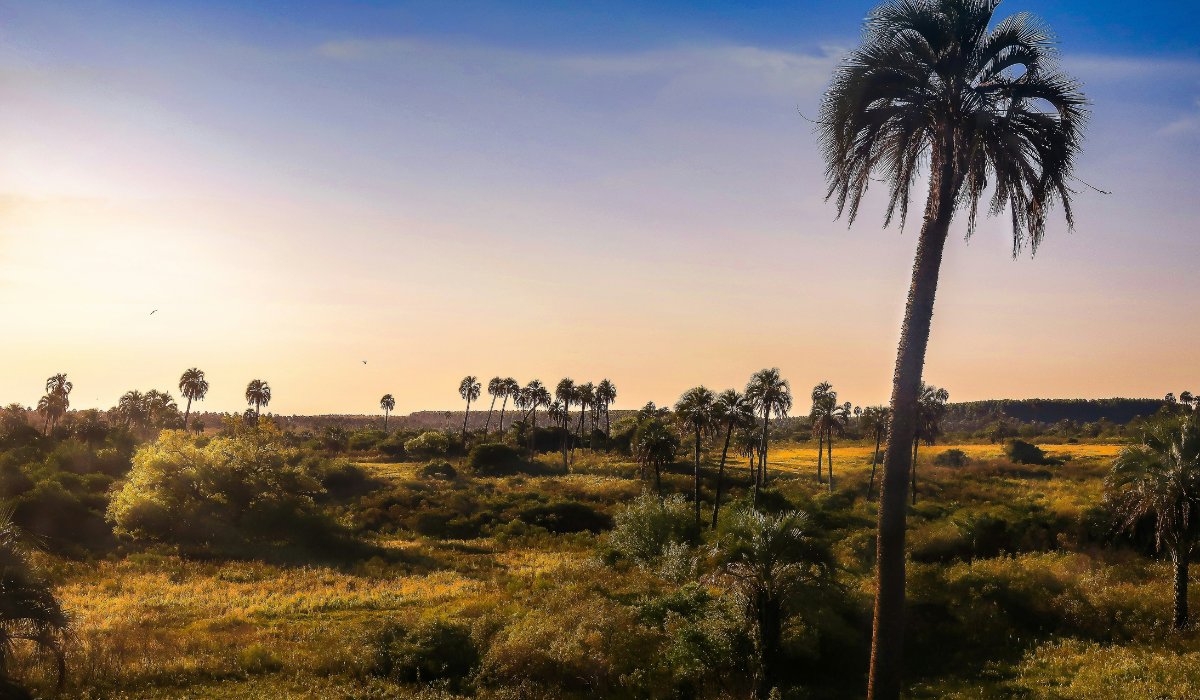
El Palmar National Park
Two National Parks near Buenos Aires
To visit a National Park it is not necessary to go to Patagonia or the Argentine North. The Ciervo de los Pantanos National Park is only 65 km from the capital, while PN El Palmar is about 360 km away. Easy to access, affordable and ideal for all travelers.
Below we tell you more about these two places and what you can do in the surroundings.
The history of El Palmar National Park
El Palmar National Park was created in 1966 and its objective is to preserve the emblematic Butia yatay palm groves. In addition, there are sectors of Espinal, gallery forest and ecosystems unique in the country.
In this area, indigenous peoples such as the Charrúas and Guaranís lived. Later, the Jesuits settled, and today you can see this history with “La Calera del Palmar”.
What to do in El Palmar National Park
It is not just about walking along beautiful paths next to the palm trees, but about enjoying a few days in the middle of nature next to the river.
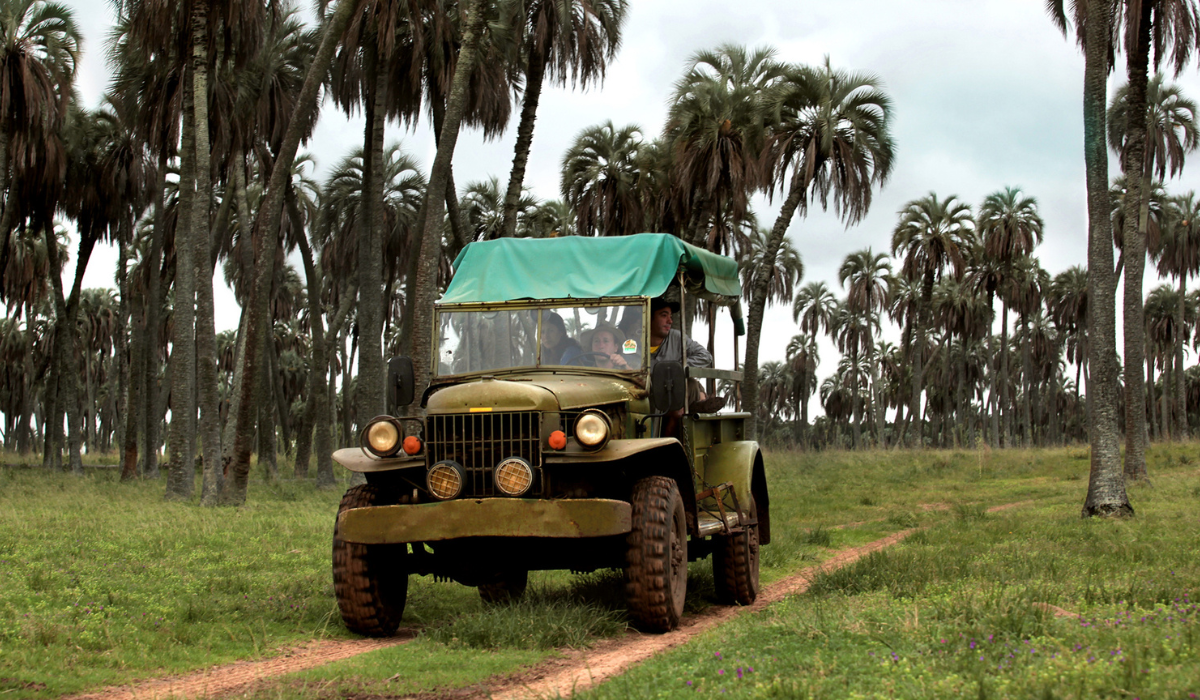
El Palmar National Park / Photo by @visitargentina
Trails
From the visitor center, pedestrian trails depart to enjoy the most beautiful places in the park. In addition, there are some that can be done by car.
Before reaching the visitor center, there is the trail to Mirador La Glorieta. It is about 1,000 meters long and starts and ends at the same place. It reaches a platform where you can see the banks of the El Palmar stream. It has beautiful views of this particular region.
Nearby, the Mirador del Palmar trail runs through gallery forests with the characteristic trees of the area.
From the campsite, the El Mollar trail starts. It is 1,400 meters long and very easy to walk.
The Yatay trail is only 600 meters long and, as its name indicates, shows the importance of the yatay palm tree.
From the intendencia, the last of the trails that lead to the Jesuit ruins starts.
The trails can be walked with an official guide or independently. In addition, there is the possibility of canoeing along one of the streams. For more information, ask at the park’s visitor center.
Beaches
In the National Park there is a beach that is a jewel of the Uruguay River. During the high season there are lifeguards. If you visit outside the summer months, entry into the water is not permitted.
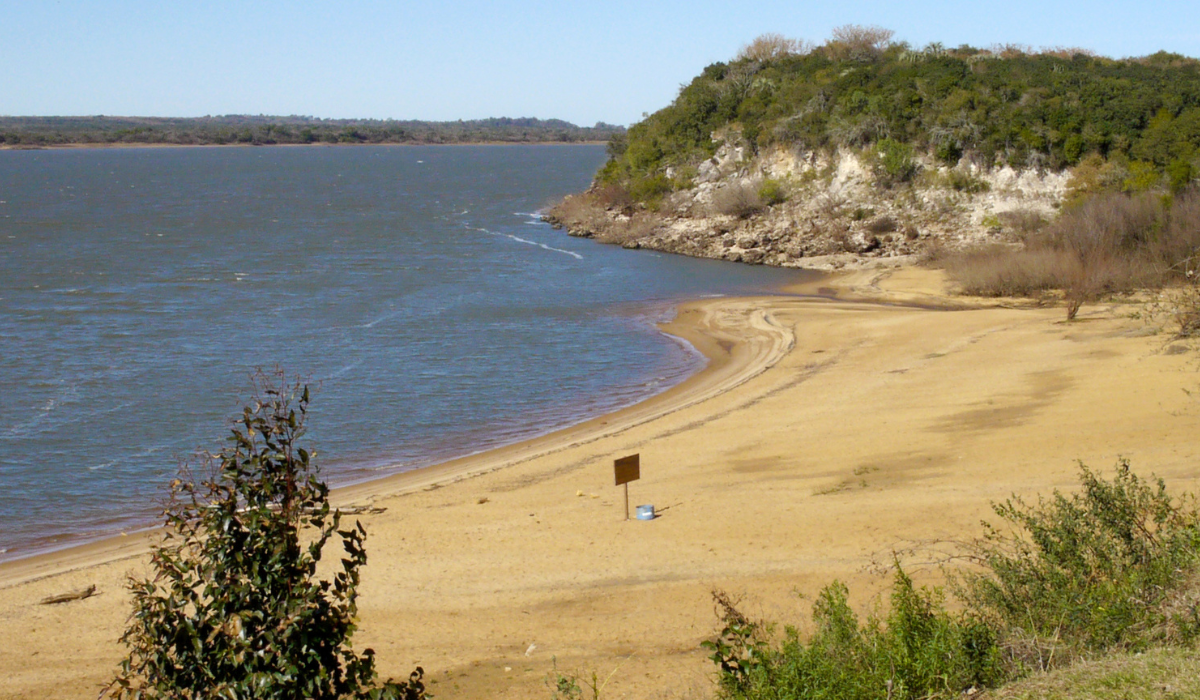
El Palmar National Park Beach
Fauna and flora in El Palmar National Park
If you like nature tourism, particularly bird watching, then bring binoculars. You can also come across foxes, rheas and the friendly capybaras.
For those who like silence and tranquility, the early morning and evening hours are excellent times to meet the animals.
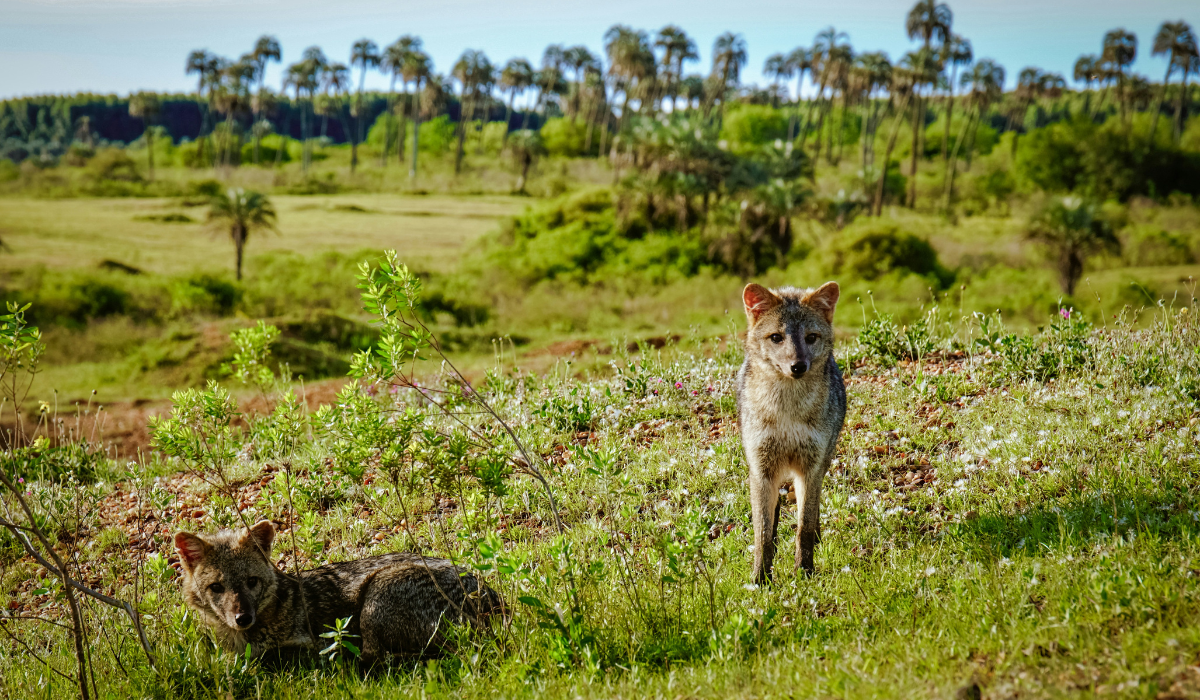
Fauna and flora of El Palmar National Park
How to get to El Palmar
From Buenos Aires, take the Pan-American Highway, Escobar branch, and then National Route 14. It is 360 km long and takes about 4 hours on the highway.
A recommendation: go slowly because there are many cameras that take photo tickets.
EMBEDDED MAP
Where to sleep
The classic El Palmar camping site is an excellent option. It is located 800 meters from the beach and has all the services to spend a few nights in comfort.
If you prefer something different, the Aurora del Palmar private reserve has restored train cars where you can sleep. It also has
a campsite. It is located in front of the National Park and has many activities in nature. For more information, visit their website.
Another option is to spend a few nights in Colón or San José, the two towns close to the Park. There you will find many accommodations of different categories.
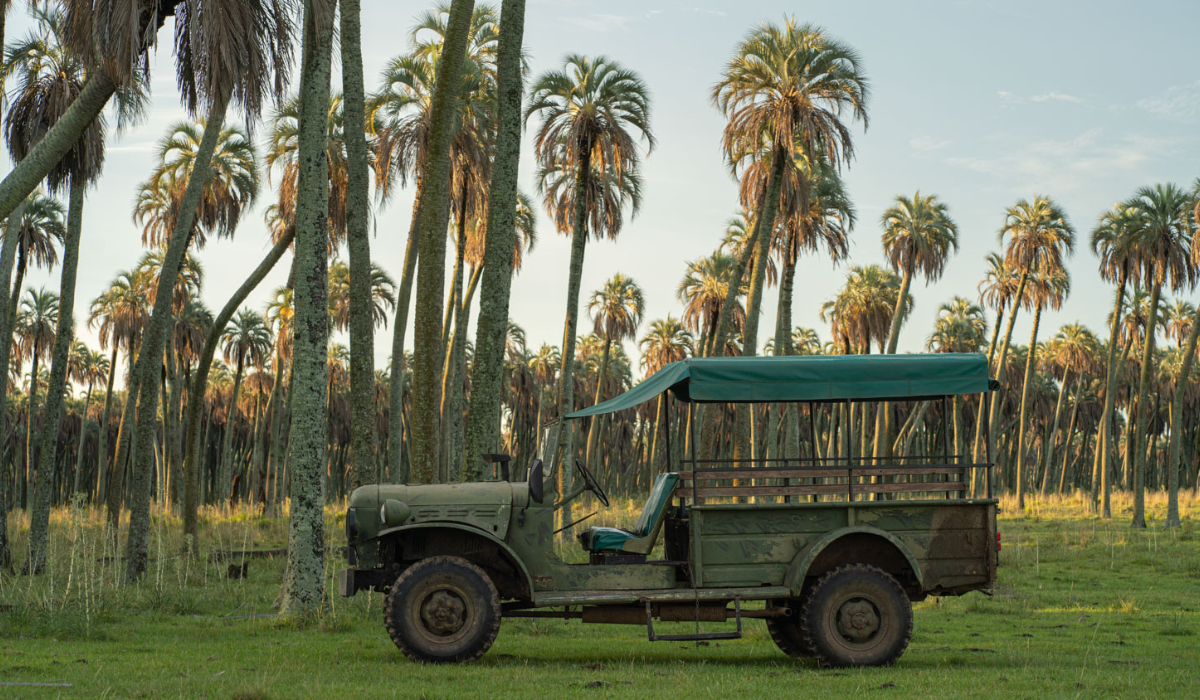
Aurora del Palmar
What to visit around El Palmar National Park
Going to El Palmar allows you to visit some nearby places that are worth it. Colón, the San José Palace and Pueblo Liebig are interesting options to spend the day.
Colón
Here you will find beaches on the Uruguay River ideal for resting. The waters of the river are calm, which allows you to do sports activities such as kayaking, sailing or windsurfing. There are two beaches where you can sit, sunbathe and get into the water: the beach in the north zone and the one in the south zone. Both have lifeguard services, places to eat and bathrooms.
The Rivera Sur Urban Reserve and the Río de los Pájaros Park are two options to immerse yourself more in nature. And if you have more time, the Termas de Colón are perfect for relaxing.
Very close to Colón are the small towns of San José and Villa Elisa. Here there are some places for rural tourism and eating in old country stores, such as the Almacén Don Leandro. In San José there is the Molino Forclaz, an old mill that is now a museum. In addition, in Villa Elisa there are its thermal baths, another option for relaxing.
Liebig Village
Can you imagine visiting a town that is an open-air museum? This town was built especially for the employees who worked in a meat factory at the beginning of the 20th century. Corned Beef, the meat extract, was made here, which was exported to many places in Europe. Just 10 minutes from Coló you can see the vestiges of that time.
Today a National Historical Heritage Site, it is a very different experience if you visit with a guide. There are times when the groups leave to take the tour. Check their social media to find out the days and times.
Palacio San José
90 km south of El Palmar National Park, you will find one of the most iconic historical sites in Argentina. The Palacio San José and the Justo José de Urquiza National Historical Monument and Museum. It was the residence of the first constitutional president of Argentina and governor of the province of Entre Ríos, Justo José Urquiza. Its spectacular nature demonstrates the power of the leader during the 19th century. In this same place, on April 11, 1870, General Urquiza was assassinated in the south gallery of the Patio de Honor, at the door of his bedroom.
To visit it, it is best to do so with a guided tour. It opens from Tuesday to Sunday from 9:30 a.m. to 6:30 p.m.
Ciervo de los Pantanos National Park
One of the closest National Parks to Buenos Aires and, until now, little visited. It is ideal for a short stop on your way to or from El Palmar. A better option is to spend a day there on a getaway from Buenos Aires.
What is the Ciervo de los Pantanos National Park
It is located in the north of the province of Buenos Aires and was created in 2018. It protects biodiversity in a wetland environment where the marsh deer makes its presence felt. With a little luck and patience, you will be able to observe them.
In the past it was part of the Estancia Otamendi, a fundamental agricultural brick production center in the region. Today you can see vestiges of that time.
What to do in Ciervo de los Pantanos
Hiking, resting and bird watching (there are about 300 species so it is advisable to bring binoculars) are the main activities. The park is small, so it can easily be covered in a day.
Hiking and picnicking
There are two trails to explore the small National Park. Walking you will get to know the river forest, the ravines and the Pampas grasslands. The three trails are no more than 2 km long, are self-guided and of low difficulty.
The Historias del Pastizal trail is 1000 m long and shows what the typical Pampas grassland is like with some historical components of the Otamendi Ranch.
The Guardianes de la Barranca trail is only 300 meters long and reaches a viewpoint overlooking the wetland.
The Recuperando lo Nuestro trail leads to the Don Juan native plant nursery.

Swamp Deer National Park
Paraná de las Palmas
The Islas Malvinas public road leads to the Paraná de las Palmas pier. There you will find the river to contemplate it in its entirety or cross to the other side. If you choose to cross it, there are green spaces and campsites to continue enjoying the day.
How to get to Ciervo de los Pantanos National Park
It is located just 70 km away on National Route 9. Once you are in the town of Rómulo Otamendi, you have to take the main road for 2 km to the entrance to the Park.
EMBEDDED MAP
When is the best time to visit El Palmar and Ciervo de los Pantanos
Both parks can be visited all year round?
No, although in the summer the temperature rises and the walks become more complex. It is best to visit it between March and December.
Before going, check the forecast because with the rains there are trails that cannot be done and you cannot enjoy the parks in their entirety.
Rent a car to visit El Palmar National Park
To tour the National Parks closest to Buenos Aires, the car is an ally at all times. In case you do not have one or do not want to use yours, then look for the best place to rent a car in Buenos Aires.
If you are looking for price, quality and safety, consult Rentennials, which will provide you with the best options to make your getaway a reality.
We are Rentennials
Rentennials is the new way to rent cars from local hosts in your city, quickly, easily, and affordably. It's also your new path to starting your own car rental business and making money every month.
Discover more.
